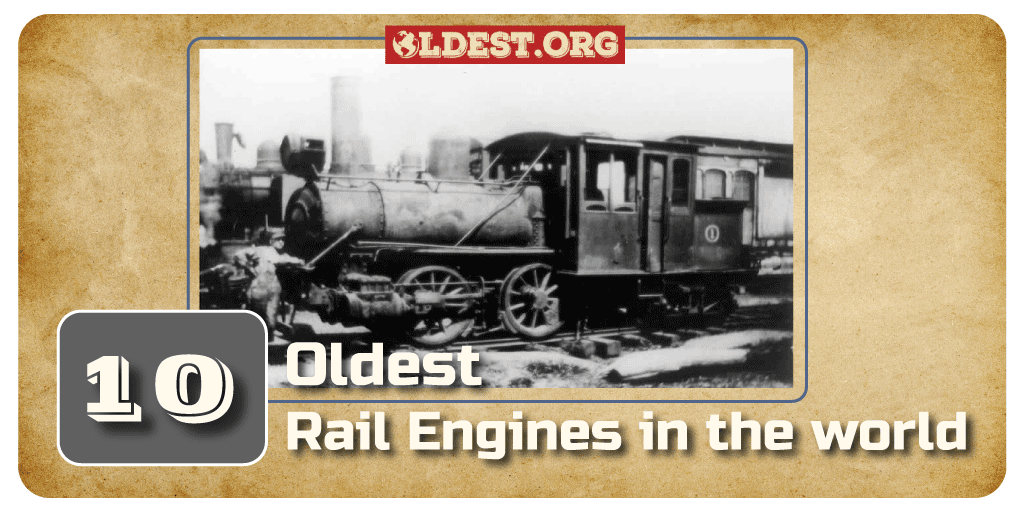From walking to using animals for transportation to engines that cut down time and increase the efficiency of transportation, the world grew. It is a necessity to understand the beginning, to navigate the journey forward better.
Let us explore the top 10 oldest rail engines in the world that have played a significant role in shaping the transportation system of humanity. These revolutionary machines of the time have an intriguing history and have significantly influenced the progress of railway development.
From pioneering steam locomotives to groundbreaking designs, let’s delve into the stories behind these historical marvels of transportation.
10. ALCO Boxcab Locomotive 11
Year Built: 1926
Country: USA
Preservation Location: North Alabama Railroad Museum, Alabama
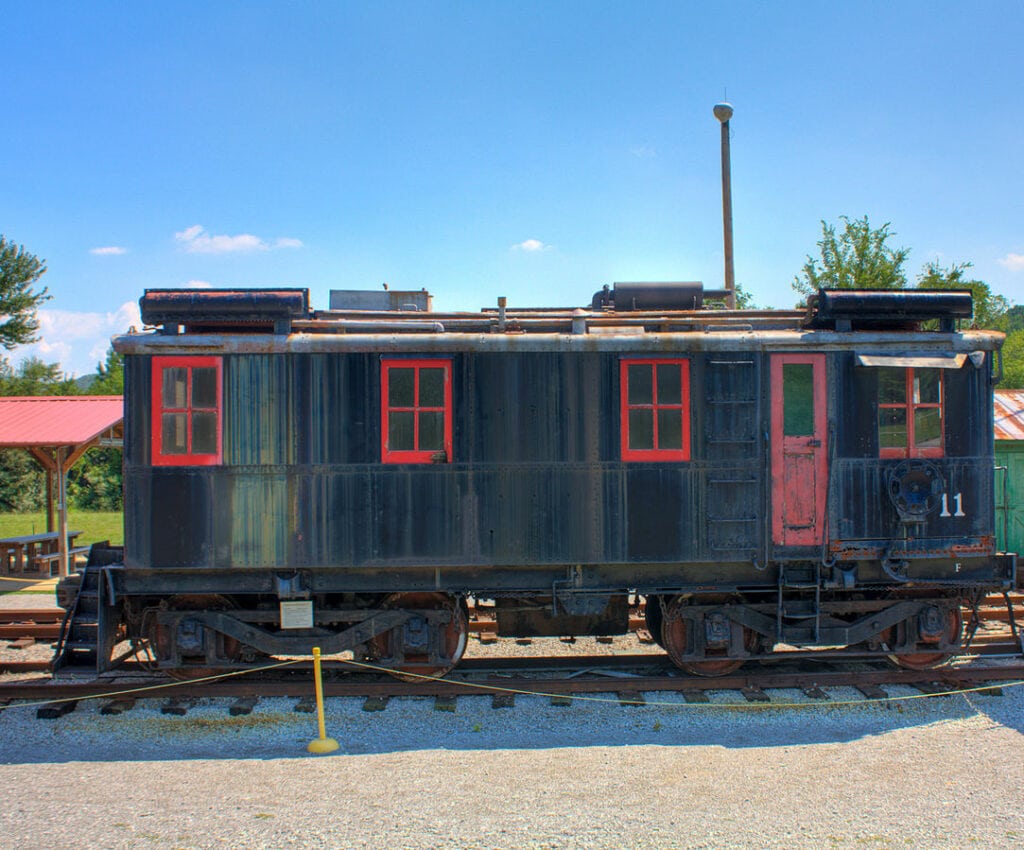
The ALCO Boxcab Locomotive 11, built in 1926, represents a significant advancement in diesel-electric switcher locomotives. The creation of the locomotive involved a partnership between ALCO (American Locomotive Company), General Electric, and Ingersoll Rand. ALCO was responsible for constructing the chassis and running gear, GE contributed the generator, motors, and controls, and Ingersoll Rand supplied the diesel engine.
This pioneering locomotive featured a diesel-electric drive system, making it highly efficient. ALCO Boxcab Locomotive 11 is preserved at the North Alabama Railroad Museum, Alabama, showcasing the technological progression in locomotive design during the early 20th century.
Did you know?
The ALCO boxcabs, also known as “oil-electrics,” were the first successful diesel-electric locomotives ever made.
They played a crucial role in transforming the railway industry by introducing the concept of using diesel engines to generate electricity for powering trains.
9. Southern Pacific Railroad Locomotive No. SP 2562
Year Built: 1906
Country: USA
Preservation Location: Nevada State Railroad Museum, Carson City, NV
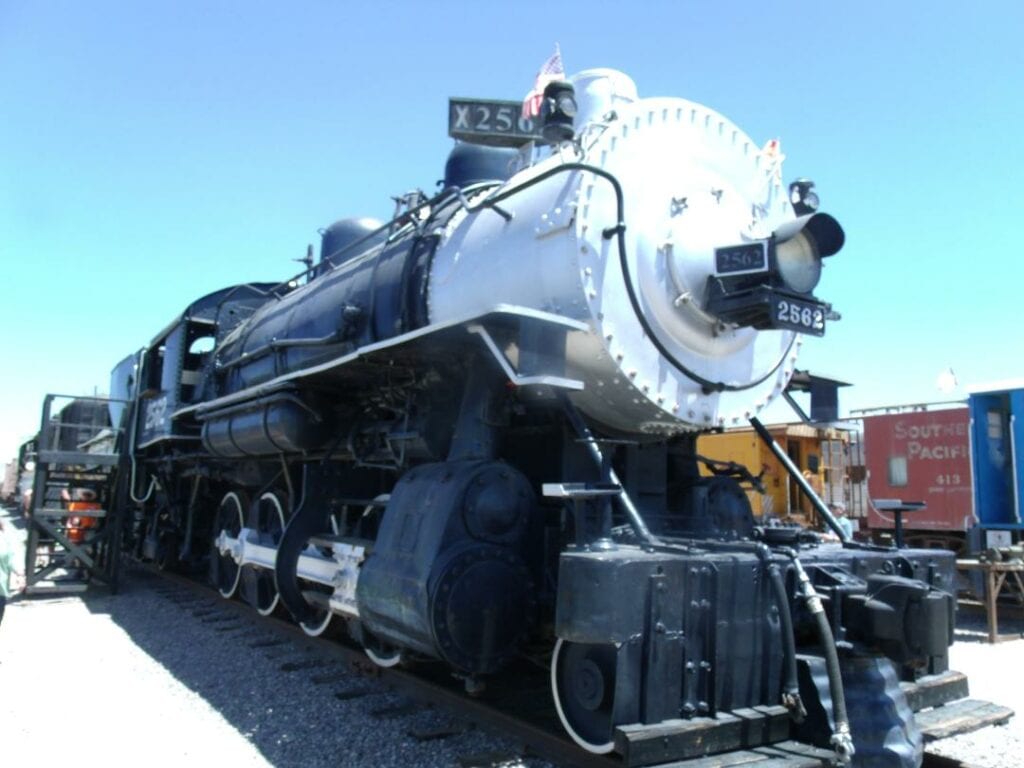
Southern Pacific Railroad Locomotive No. SP 2562, constructed in 1906, is a prominent steam locomotive that operated on the Southern Pacific Railroad. This locomotive served various routes across the western United States, contributing to the expansion of rail transportation in the region.
SP 2562 is currently safeguarded and displayed at the Nevada State Railroad Museum located in Carson City. It represents the era of steam-powered locomotion and provides insights into the vital role played by railroads in the economic development of the western United States.
Did you know?
The Southern Pacific Railroad, founded in 1865, was the first to connect Los Angeles to the rest of California, playing a crucial role in the state’s development.
8. Stirling Single No. 1
Year Built: 1870
Country: England
Preservation Location: National Railway Museum, York, UK
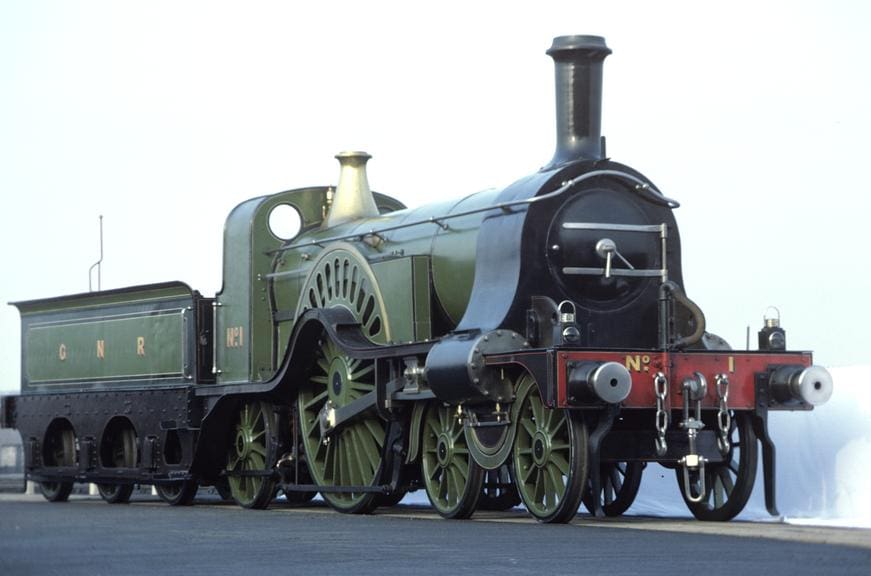
The Stirling Single No. 1, built in 1870, is a renowned steam locomotive that played a significant role in the development of British railways. Designed by Patrick Stirling, this locomotive employed a single-driving wheel and a unique eight-foot diameter boiler. Stirling Single No. 1 operated on the Great Northern Railway, showcasing its speed and efficiency.
Today, a replica of this historic locomotive can be seen at the National Railway Museum in York, UK. Its innovative design and impact on British locomotive development make it a remarkable piece of railway history.
Did you know?
Stirling Single No. 1, built in 1870 and the only preserved example of its class, made a special appearance in the York Theatre Royal’s production of “The Railway Children” at the National Railway Museum and Waterloo International Station.
7. C. P. Huntington
Year Built: 1863
Country: USA
Preservation Location: California State Railroad Museum, Sacramento, CA
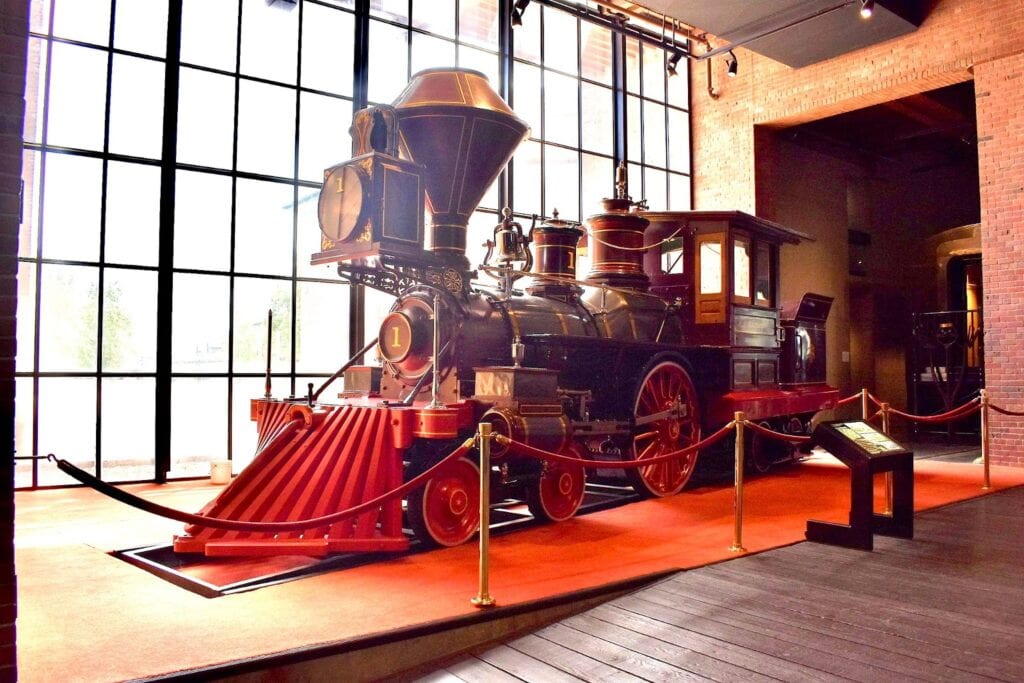
The C. P. Huntington locomotive holds significant historical importance as the first locomotive of the Central Pacific Railroad. Built-in 1863, it played a vital role in the early development of railways in California. This steam-powered 4-2-4T locomotive operated on the Sacramento Valley Railroad and later became part of the Central Pacific Railroad.
Today, C. P. Huntington is preserved at the California State Railroad Museum in Sacramento, California. Its remarkable preservation showcases the ingenuity and perseverance of those involved in the construction of the Transcontinental Railroad.
Did you know?
The C. P. Huntington steam locomotive, displayed at the California State Railroad Museum, served as the inspiration for the appearance of “The Little Engine That Could” in storybook illustrations.
6. Gov. Stanford or “Central Pacific 1”
Year Built: 1862
Country: USA
Preservation Location: California State Railroad Museum, Sacramento, CA
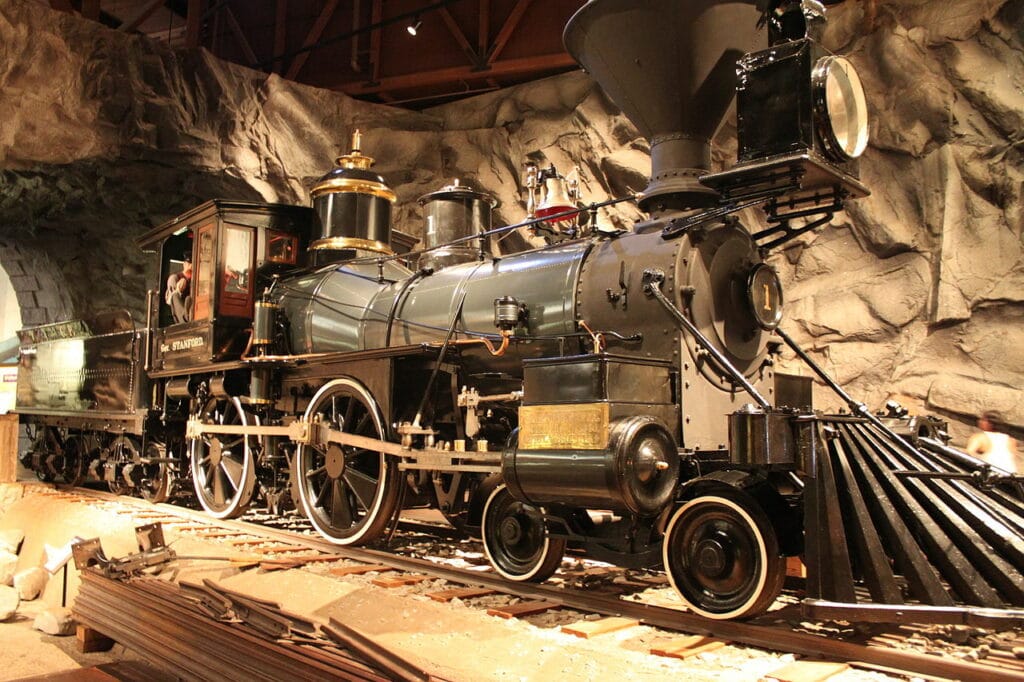
Also known as “Central Pacific 1,” Gov. Stanford holds a special place in railroad history. Constructed in 1862, this steam locomotive played a crucial role in the construction of the First Transcontinental Railroad in the United States.
Gov. Stanford operated as a Central Pacific locomotive, connecting the West Coast to the rest of the nation. This 4-4-0 locomotive is now on static display at the California State Railroad Museum in Sacramento, California. It represents an iconic symbol of the groundbreaking efforts and engineering marvels that united the eastern and western coasts of the United States.
Did you know?
To acquire locomotives for the Central Pacific Railroad, they had to be purchased from eastern builders and embarked on a four-month journey around Cape Horn to reach Sacramento, where they were reassembled for service.
5. Fairy Queen
Year Built: 1855
Country: India
Preservation Location: National Rail Museum, New Delhi, India
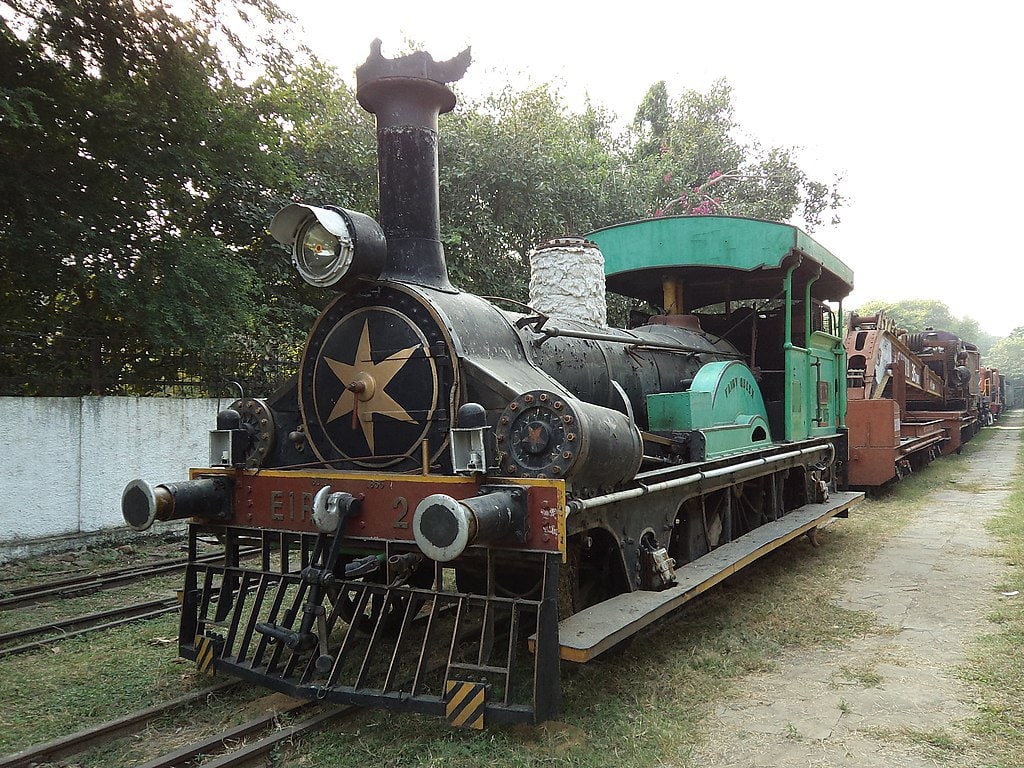
The Fairy Queen, built in 1855, is a historic steam locomotive that holds the distinction of being the oldest steam locomotive in regular service for many years. This 2-2-2 locomotive operated in India, primarily serving the East Indian Railway Company. After its retirement from active service, the Fairy Queen found a new home at the National Rail Museum in New Delhi, India.
Occasionally, it is restored and put on heritage runs, providing a unique opportunity for enthusiasts to experience the nostalgia and elegance of early steam locomotion.
Did you know?
The Fairy Queen, built in 1855, holds the Guinness World Record for being the world’s oldest working steam locomotive, still delighting passengers with its nostalgic journeys after more than a century and a half.
4. DeWitt Clinton
Year Built: 1831
Country: USA
Preservation Location: Museum of Science and Industry, Chicago, IL
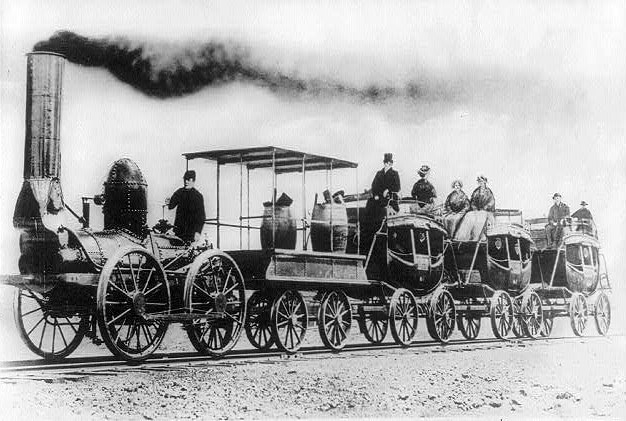
DeWitt Clinton, constructed in 1831, is an iconic locomotive in American railroad history. This steam-powered locomotive was instrumental in proving the viability of railways over canals during the early 19th century. Named after DeWitt Clinton, the Governor of New York at the time, this locomotive operated on the Mohawk and Hudson Railroad.
DeWitt Clinton’s remarkable preservation can be attributed to the efforts of the New York Central Railroad, and it is now on display at the Museum of Science and Industry in Chicago, Illinois. The DeWitt Clinton locomotive showcases the birth of the American railroad era.
Did you know?
The DeWitt Clinton steam engine, named after the governor of New York State who oversaw the construction of the Erie Canal, had parts of its locomotive cast at the renowned West Point Foundry in Cold Spring, New York.
3. Stourbridge Lion
Year Built: 1829
Country: USA
Preservation Location: Wayne County Historical Society, Honesdale, PA
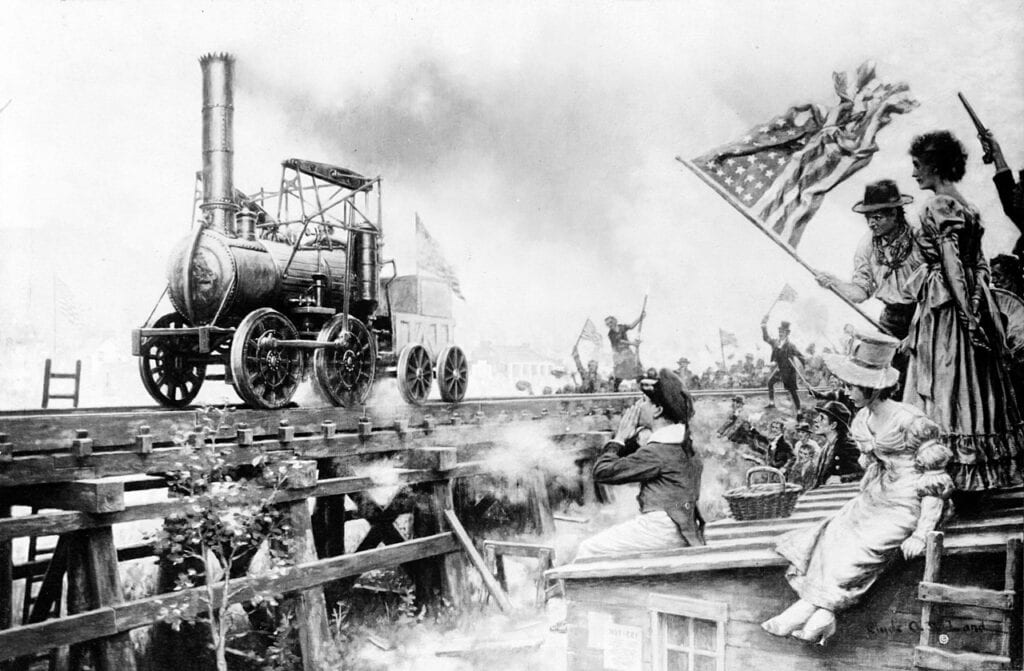
The Stourbridge Lion, built in 1829, holds the distinction of being the first steam locomotive to run on a commercial track in the United States. Designed by George Stephenson, this locomotive was imported from England to test its feasibility for hauling coal in the Pennsylvania coal fields. Despite its limited success, the Stourbridge Lion paved the way for future steam locomotives in the United States.
The original locomotive is no longer extant, but a replica can be seen at the Wayne County Historical Society in Honesdale, Pennsylvania, commemorating the birth of American steam railroading.
Did you know?
The Stourbridge Lion, manufactured in England in 1829, was the first foreign-built locomotive to operate in the United States and featured a lion’s face on its front.
2. Puffing Billy
Year Built: 1813-14
Country: England
Preservation Location: Science Museum, London, UK
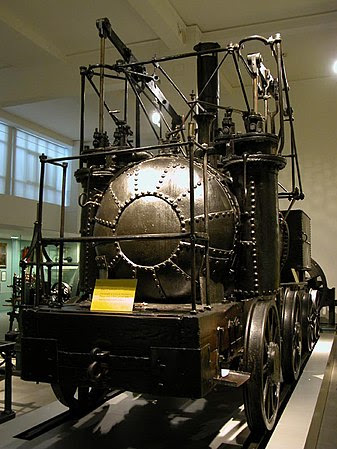
Puffing Billy, dating back to 1813-14, stands as the oldest surviving locomotive in the world. This early steam locomotive was built by William Hedley and Timothy Hackworth for the Wylam Colliery in Northumberland, England. Puffing Billy operated on the Wylam Waggonway, transporting coal from the mines to the docks.
It featured a vertical boiler and employed a rack-and-pinion mechanism for traction. Puffing Billy’s remarkable preservation is credited to the keen interest of the Blackett-Ord family, who recognized its historical significance.
Today, Puffing Billy is proudly displayed at the Science Museum in London, providing a captivating insight into the early days of steam locomotion.
Did you know?
Puffing Billy, built in 1813-1814 by William Hedley, Jonathan Forster, and Timothy Hackworth, is the world’s oldest surviving steam locomotive and was originally used at Wylam Colliery near Newcastle upon Tyne in the United Kingdom.
1. Salamanca
Year Built: 1812
Country: England
Preservation Location: National Railway Museum, York, UK
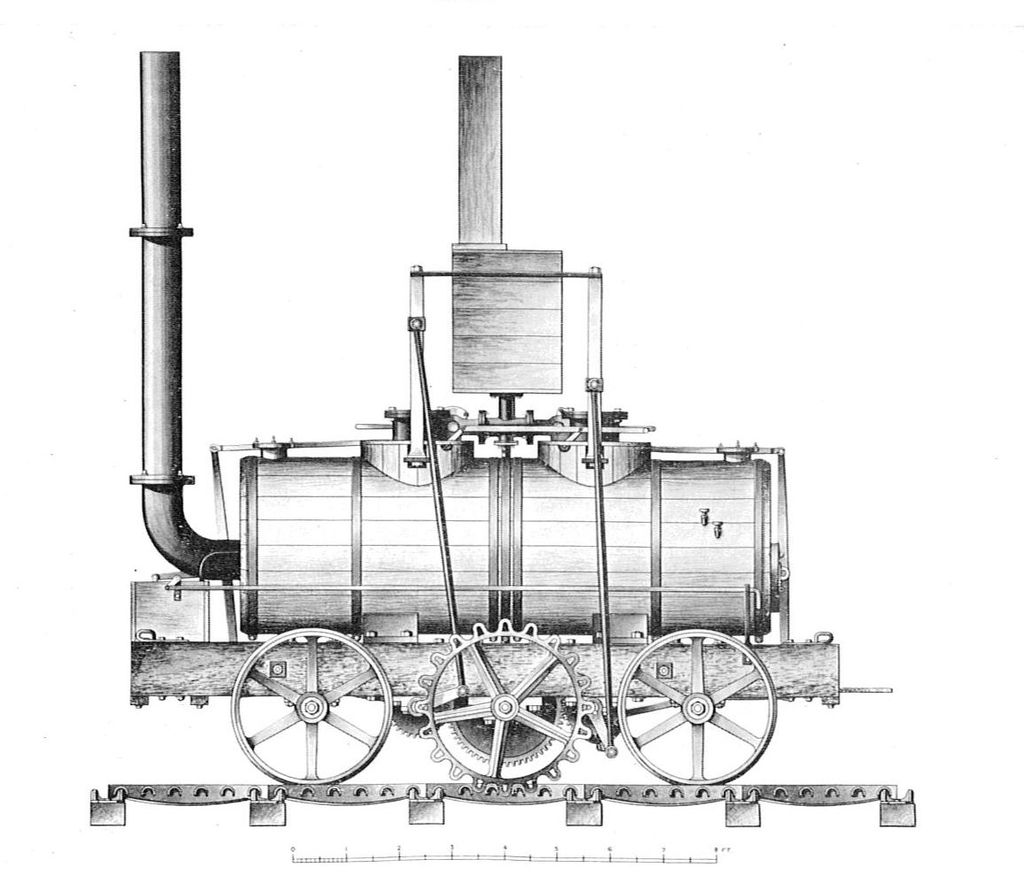
Salamanca, built in 1812, holds the distinction of being the first commercially successful steam locomotive. This is considered as the oldest rail engine in the world. Designed by Matthew Murray, this locomotive was instrumental in demonstrating the cost-effectiveness and speed of railways, thereby surpassing the efficiency of canals. Salamanca featured a unique design with two vertical cylinders, each driving a pair of wheels.
Although it was initially used in the narrow-gauge Middleton Railway in England, this historic locomotive now finds its home at the National Railway Museum in York, UK. Salamanca played a crucial role in the advancement of steam locomotion and revolutionized railway transportation.
Did you know?
Salamanca, named after the battle victory, was not only the first steam locomotive with two cylinders but also the pioneering rack and pinion locomotive using John Blenkinsop’s patented design.
Conclusion
Preserving and showcasing the oldest rail engines in the world allows us to connect with the origins of rail transportation and appreciate the advancements that have shaped modern railways. From the pioneering steam locomotives of the early 19th century to the diesel-electric switchers of the 20th century, these preserved locomotives offer a tangible link to our past.
Museums and heritage railways provide a platform to educate and inspire enthusiasts about the rich history of railroads.
By cherishing these historic rail engines, we honor the engineering brilliance and perseverance of those who paved the way for the efficient and interconnected railway systems we have today.


